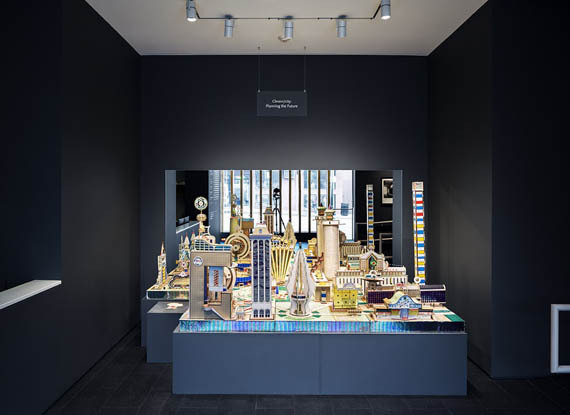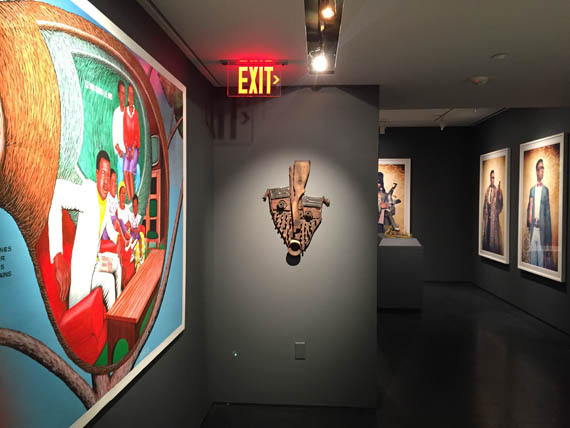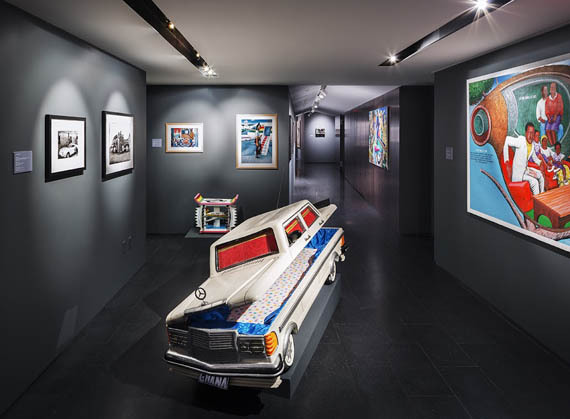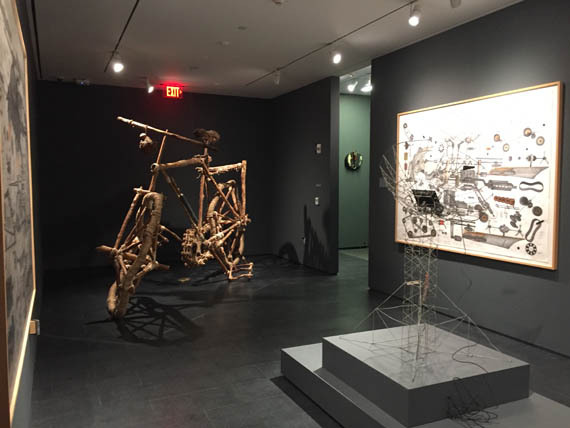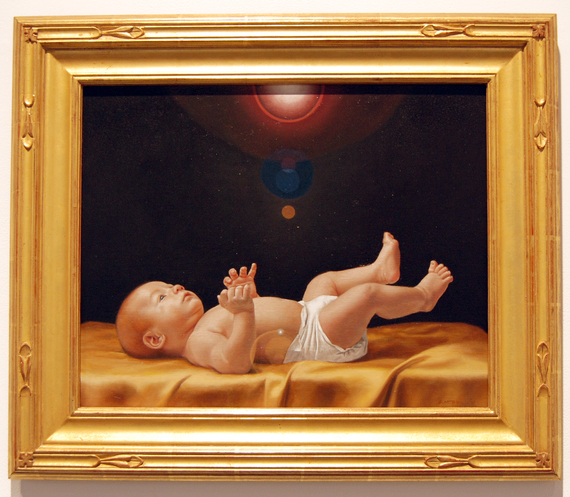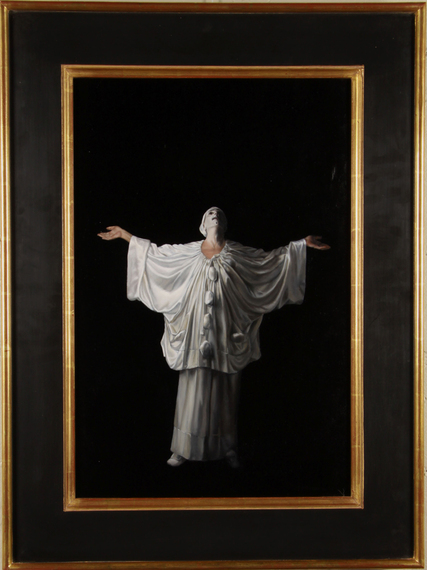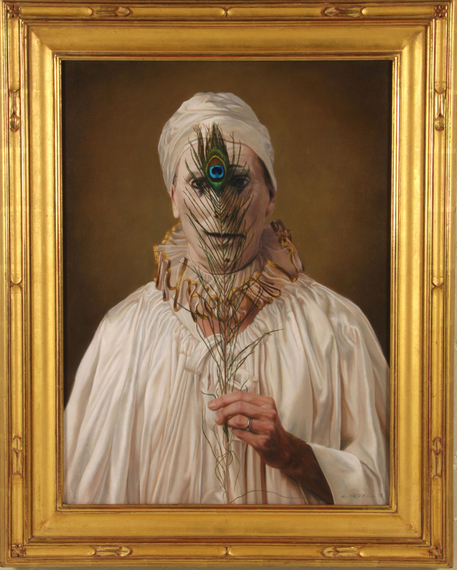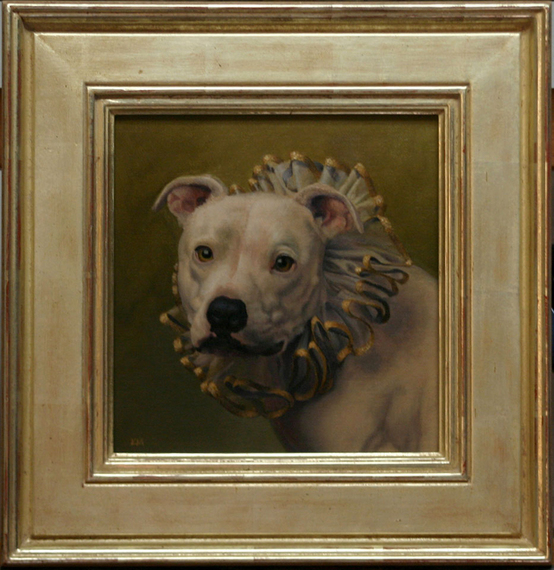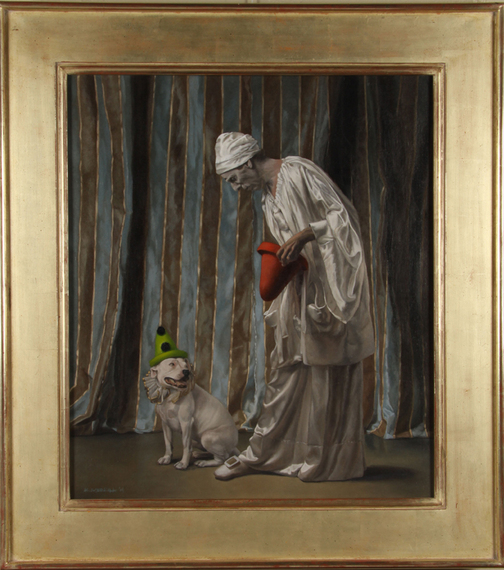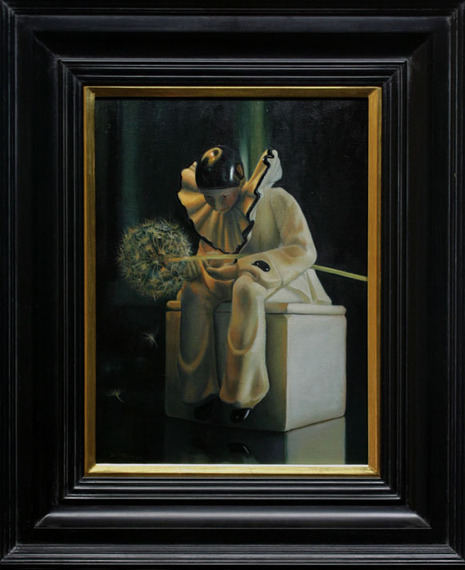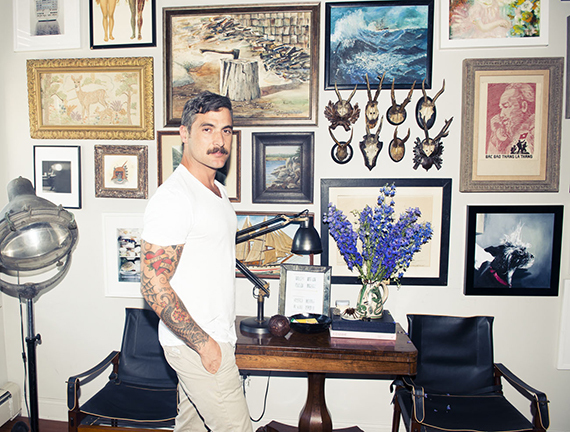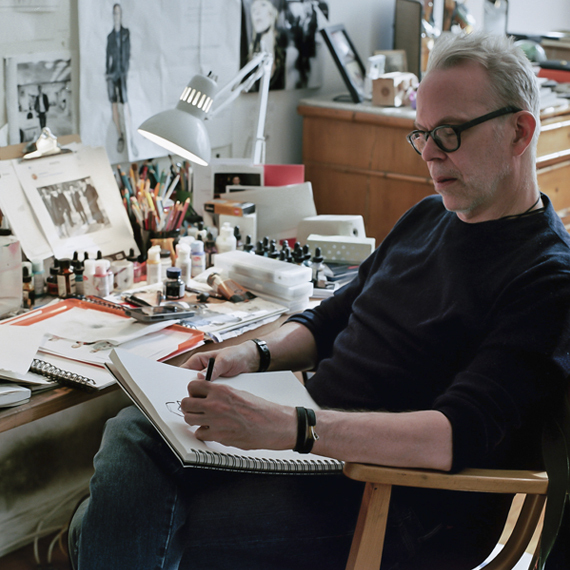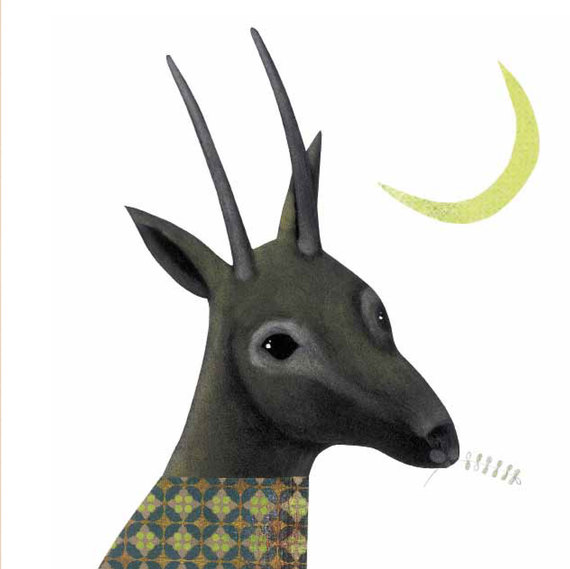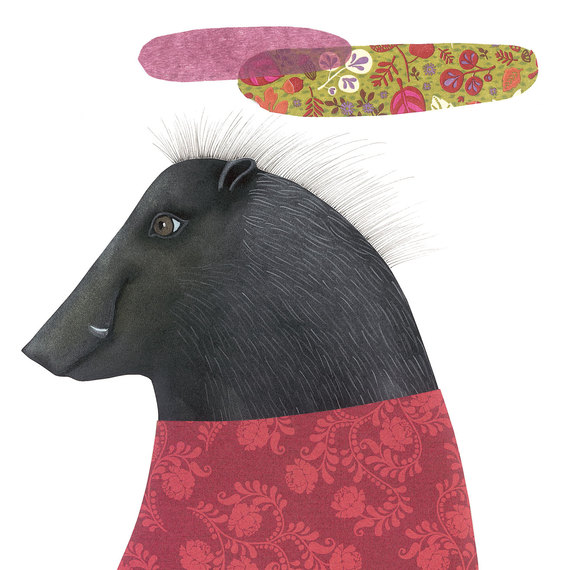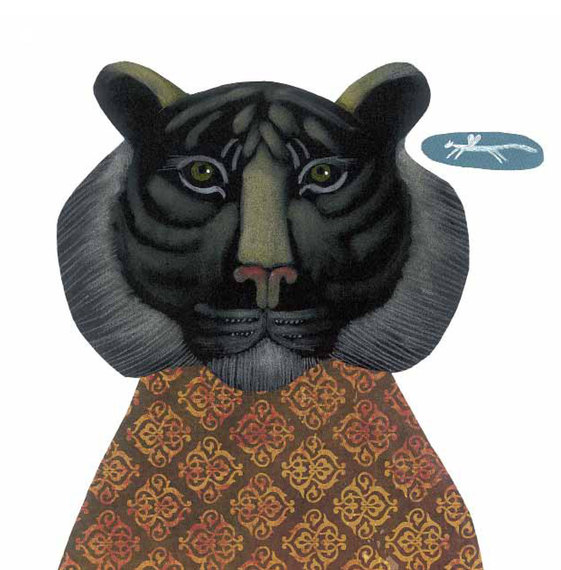HONEYMOON IN VEGAS ** out of ****
THE WOODSMAN ***
CONSTELLATIONS ** 1/2
TAYLOR MAC 1930s-1950s ** 1/2
HONEYMOON IN VEGAS ** out of ****
NEDERLANDER THEATRE
Broadway seems to have lost the art of out of town tryouts, those treks to the heartland (or even Jersey) where you work out the kinks in a show, see what you've got, start trimming or adding numbers, fire and hire people and so on. It's become almost impossible, they say, thanks to YouTube and top critics hightailing it to wherever you are so they can deliver an early verdict. But it has its place and many shows, especially musicals, desperately need it. Now with the pressure to secure a house or maybe with the tantalizing prospect of a Tony when no big show has captured attention or just to save money, too many shows have abbreviated out of town tryouts or none at all.
Honeymoon In Vegas was different. It played at the Papermill Playhouse in October of 2013, a venue that has proven its ability to offer an excellent showcase for new shows with their eye on Broadway. Thanks to a friendly review from the only outlet that matters (the Grey Lady, natch), investors lined up to take this show to Broadway. Fifteen months later, here it is!
You can read my earlier review right here and you might as well: very little has changed. Really? Did they think the show was that close to perfect? Fifteen months and no significant reworking of the plot or addition of key new songs or recasting or anything?
It's harmless fun and I was rooting for it, but a second viewing exhausts what little enthusiam I mustered, especially when they couldn't be bothered to do much more than spruce it up here and there. Here's a montage of this would-be throwback to the 1950s musical (which
Aladdin does much better).
The story, based on the film written by Andrew Bergman, is silly enough. A nebbishy fellow loves his gal but a curse placed on him by an overbearing mother freezes him with fright whenever marriage looms. She loses patience and they impulsively head to Vegas to do the deed. That's when a tough gangster/card sharp spots the gal: she's a dead ringer for his late, beloved wife. He cheats our hero in cards and saddles the guy with nearly $60,000 in debt, forcing him to suggest his gal "hang out" with the gangster. In revenge for even suggesting such a thing -- and surprised by the thug's charm -- she does just that, flying off with him to Hawaii. Our hero goes off in pursuit and finally catches up with her back in Vegas, making a dramatic splash to win her back. If you've seen the movie or just the ads for it, you know this somehow involves a troupe of Flying Elvises. Hey, it's Vegas.
The show has been touched up here and there. The sets are a little better, thanks mostly to some detailed projections. But the grey and wood screens that dominate the color palette don't exactly scream Vegas and prove generic and tiresome when seen in Sin City and Hawaii and airport lounges (about the only place they actually belong). The mild but unpleasant racism of some minor characters (Asian tourists who used to goggle at showgirls and a Hawaiian gals pidgin English) have thankfully been eliminated. But the songs, the staging, the basic structure of the show remain sadly identical to that out of town tryout long ago.
Rob McClure is a Tony nominee for
Chaplin and has a certain nebbishy, Everyman appeal. But I'm not sure about his star power and both he and Brynn O'Malley have such generic characters to play, it's hard to care for them much at all. It doesn't help that they're separated for virtually the entire second act. (He's trying to get her back, but since she doesn't know this or see him trying, it doesn't have much impact.) Tony Danza is an amiable presence but remains entirely wrong for the role of a menacing gangster we might actually fear the way you instinctively worry James Caan in the movie might have meanness in him. Danza is a pussycat by nature and it makes his villain pretty toothless. He's also very thin of voice, sounding even less sure of himself this time around.
They get most everything wrong here, right down to saving pennies by NOT having O'Malley toss the bouquet she's clutching into the audience at the end of the show. Jason Robert Brown delivered two good songs here and few okay ones. David Josefsberg has fun as a Vegas crooner and nails "When You Say Vegas," which should be an amusing aside but unfortunately is the ring-a-ding-ding highlight of Act One. And Danza -- a musical theater fan and cabaret performer -- surely has dreamt of being in an original Broadway show all his life. Here Brown gives him the treat of "You Made The Wait Worthwhile." It's an act two number with a very modest range written right in his sweet spot. Danza gets to strum a ukulele and sing this little ditty that genuinely sounds like a throwback to some 1930s gem. It's the show's best number by a mile, the only one with any emotional impact and Danza -- and the audience -- have at least one happy memory to share.
THE WOODSMAN ***
59 E 59
It's not often you get a second chance to see a smaller show that came and went. Luckily, The Woodsman has returned and anyone with affection for puppetry, fairy tales and clever pure theater should jump. It explores the world of L. Frank Baum by telling the origin story of the Tin Woodman. And how it's told is what makes this show special. Writer, co-director and star James Ortiz has an introductory narration setting the stage for the Land of Oz and the fearful lives of the Munchkins who reside there under the reign of evil witches.
But after that brief section, the show is virtually wordless. The story is told with a troupe of actors and some simple but effective theatrical flourishes. Think Cheek By Jowl or
Peter and the Starcatcher. Who needs elaborate effects when a few actors holding up branches can let you believe immediately in a menacing forest that grabs and clutches at anyone who dares to pass through? Various characters are brought to life either by actors or puppetry, especially a menacing creature and the show's highpoint, an aged but frightening Wicked Witch of the East.
The storytelling on display is charming but this is not for little children. As told in
The Tin Woodman Of Oz, our hero begins as a man but his axe is cursed and it slowly dismembers him limb by limb (which he replaces with a tin appendage) until there's nothing left and he can't love the woman of his dreams anymore. Along with the witch, this slow dissolve into mechanical man is handled beautifully. (Ortiz also did the set design and puppetry.)
Despite his guiding hand on the show, Ortiz wasn't even my favorite actor on stage. I much preferred Eliza Simpson as the Woodsman's true love, Will Gallacher and Laura Nordvig as our hero's parents and Alex J. Gould caught my eye in various parts. This just proves Ortiz is smart enough to surround himself with talent.
At one hour, the show is just the right length. There's a little repetition, with the parent's story proving too similar in its telling to the romance of the Woodsman and his heroine. The score by onstage performer Edward W. Hardy is excellent though a song towards the end is a little discordant and less successfully sung (or arranged?) than others. This is all to say that
Strangemen & Co. -- the troupe Ortiz is a co-artistic director of -- is very talented and fresh. Excitingly, they should improve and grow by leaps and bounds as they continue to mount works. Fans of Pigpen Theatre Co. and original theater in general take note.
CONSTELLATIONS ** 1/2
MANHATTAN THEATRE CLUB AT SAMUEL J FRIEDMAN THEATRE
Constellations is not the show it thinks that it is. Luckily, it has two engaging actors with chemistry and charm to burn. Jake Gyllenhaal and Ruth Wilson make the evening an easy pleasure, reveling in the actor catnip of getting to play various bits of dialogue over and over again in different styles: one time angry, another time sad and so on. Go to appreciate their talent. But don't be surprised to find that Nick Payne's play is ultimately exhausting and confusing.
The set-up is simple enough. We watch two people meet cute at a BBQ in England. The woman Marianne goofily talks about how impossible it is to lick one's elbow, which is sad, she says, because if you can lick your elbow you'll live forever. The man Roland reacts in varying ways to this: sometimes he shuts her down. Then the lights flash and the scene begins again and he gently makes clear he's in a relationship or just getting out of a relationship or he gamely starts to try and lick his own elbow. In most of these varying outcomes, they do not seem likely to start dating, but one or two seem to do the trick.
Later we learn Marianne works in science and her explanation of what she actually does involving astronomy and sorting through the noise of space to determine patterns and cull information about the stars etc. can go over Roland's head or confuse him or turn him on. And finally, as visions of
Groundhog Day appear, Marianne clarifies exactly what is going on. It's the idea of the multiverse, that idea that every action you take (or don't take, which is itself an action) creates its own reality, its own timeline of events. In one reality you marry the girl of your dreams, in another you become a rock star rather than an accountant with dreams of music frustrated), in another you move to Denver rather than staying in your hometown. All these realities exist at the same time parallel to one another. They're not all dramatically different from one another but they do exist.
Constellations will constantly explore the idea of a multiverse, the many realities where a romance can go in different directions or never take place at all. Think Michael Frayn or Tom Stoppard and you'll have an idea of the heady marriage Payne wanted to make between earthy love and high-minded theory.
Count me in! Multiverses are right up the alley of someone like me who devoured sci-fi as a kid and seen it explored in works by Italo Calvino and Borges and Millhauser and countless others. Are you confused? Think of it this way: in one reality you have cereal for breakfast, in another you have oatmeal and in yet another you skip breakfast entirely but this prompts you to go to lunch earlier than usual where you accidentally meet the love of your life. Get it? Now not every choice will have dramatic impact. (Though if everyone suddenly begins to favor oatmeal over cereal maybe yet another family farm goes out of business and the angry son in that family becomes a new Hitler! So you never know.)
Unfortunately, this show never actually explores the idea of a multiverse or a multiplicity of possibilities in any relationship. It thinks it does but in fact
Constellations is more akin to the acting exercise found in the brilliant piece
Sure Thing by David Ives. In that short work, a man and a woman in a cafe meet and every time one of them fumbles or says the wrong thing, the action resets and they get another chance until finally at the end they romantically click. It's great fun. For example, in many realities, Roland and Marianne date, move in together and one of them cheats on the other. We see this again and again: in one variation, Marianne tells him rather abruptly, in another she tells him angrily, in a third she's sad, in a fourth he tells her that he's cheated and so on. But except in the most banal and uninteresting manner, these aren't really multiple realities. In each of them, one has cheated on the other and they're sure to break up. How they get there may be mildly different but the end result is the same. The fact that the news was broken angrily or sadly may be "different" but it's not different in a way that's terribly revealing. Payne does this again and again.
Similarly, the show explores perhaps unintentionally another trope of sci-fi and fantasy: that's the story of true love which triumphs in any multiverse whatever obstacle may be placed in its path. Some lovers are simply meant to be together and will be in one way or another (perhaps tragically or happily but always memorably) no matter what. The show unintentionally takes this point of view -- which is rather opposite to the idea of multiverses where so many paths coexist at the same time -- because no matter what happens we sense the show is gonna make damn sure these two get together. MILD SPOILER ALERT There's also a looming illness, which is tipped quite early in the show, so it's not much of a spoiler to mention. This tragedy of a short life cuts across most of the possibilities we're shown, another example where the show isn't sure of what it hopes to do. END OF SPOILER.
The confusion extends to the production overseen by director Michael Longhurst. The scenic and costume design is by Tom Scutt, with lighting by Lee Curran and sound design by David McSeveney. It's no surprise they'd be confused about what to do since the play is muddled itself. The stage is bare with a striking clutch of white balloon-like bulbs in a clump above, tails floating down a bit. In the first scene, one bulb lights up as if to indicate one possibility. When their first meet collapses, the scene resets and another bulb lights up. Okay, but this is soon dropped. Later neurons fire off in the cluster of bulbs, akin to the brain waves that might be going akimbo in one character's head. This too is dropped. Towards the finale, actual white balloons drift down at one sad moment, like tears or rain. It's a brief arresting image. But then a minute later a few more balloons drift down. And a few minutes later a handful of balloons again float down. it feels so random you begin to wonder if the last few were stuck in the rafters and just got loose. To top it off, all the balloons go multi-colored at the finale in a sort of rude counter to one character's expressed taste in memorial celebrations -- no balloons, they insist. Why would the show ignore this?
Again, Payne and the show are blessed to have fresh Emmy winner Wilson (for
The Affair) and fresh Oscar-snubbed Gyllenhaal (for
Nightcrawler, but being snubbed is a grand tradition so he should embrace it). The structure and overall ideas of Constellations may be awfully muddled but scene to scene it's fun. Again, we see Roland propose to Marianne in various ways; again, this isn't a terribly interesting exploration of multiverses but it is fun and the emotional high point of the show as Gyllenhaal finally blurts out his love. You'd be happy to go through endless variations on love as long as these two are involved.
TAYLOR MAC A 24 DECADE HISTORY OF POPULAR MUSIC: 1930s-1950s (DRESS REHEARSAL) ** 1/2
NEW YORK LIVE ARTS
This is my first experience of
Taylor Mac (one doesn't just see
Taylor Mac) and I'm at a bit of a loss. He's in the midst of a two year process developing a wildly ambitious 24 hour event which will be dubbed
A 24 Decade History Of Popular Music. Each hour will be devoted to one decade, leaping from the 1700s to the future. In a flip on what Talking Heads did in their classic concert film, Mac says he'll begin with 24 musicians on stage and one will leave each hour until it's winnowed down to one for the finale. (In
Stop Making Sense, the show began with Byrne alone on the stage and they slowly added musicians until the raucous finale.)
You can expect LOTS of audience participation (Mac wants to build up a sense of community in the audience even as the literally 24 hour performance wears them down). There will be showers on stage, drag queens, and a cast of thousands apparently. As one of the most acclaimed performers of recent years, Mac is swinging for the fences with a show so long you could watch Einstein On The Beach almost five times or Wagner's The Ring Cycle twice in the time it will take to perform. Why not? The venue lucky enough to get it -- St. Ann's Warehouse? BAM? Lincoln Center -- will definitely have a happening on their hands and one of the signal events of 2016.
What we saw at New York Live Arts was unquestionably a rough draft of three hours of that event, covering the 1930s to the 1950s. A dress rehearsal Mac called it and that it was in every sense of the word. The show ran three and a half hours and many anecdotes were rambling and unfocused as Mac introduced one song or concept or spun out the many audience moments (such as getting everyone to come on stage and sit on the floor or forcing all the white people to flee to the suburbs -- the side aisles -- while the people of color were invited to camp out in the center seats for a few songs). He forgot the words once or twice (he's got a hell of a lot of songs to learn!) and some arrangements were nailed down better than others. It left you both intrigued about what the final show might look like and a little exhausted at the same time.
This is a performance from Chicago in October of 2013 from
An Abridged Concert of the History of Political Popular Music. It's in the same vein as his current project but has no connection; it's just to give you a taste of the Taylor Mac experience.
An unquestioned highlight were the decade-specific costumes by Machine Dazzle (aka Matthew Flower). Sequins pop up in the 1930s because machines finally existed to make them practical in clothing, but they were still too expensive for all but the wealthy...or Taylor Mac of course. Similar attention to detail is a hallmark of MD, whose suburban skirt was a highlight of the 1950s. The band was solid throughout, especially Viva Deconcini on electric guitar and the handsome musical director, pianist and background singer Matt Ray.
Perhaps it's just Taylor Mac's style, but what gives me pause is the fact that so few of the actual musical performances proved memorable. Too many were jokey, ironic performances of songs. One could practically see the quotes around every line to indicate a certain distance whether Mac was vamping up "Brother Can You Spare A Dime?" or joshing around on "Sway." This may simply be a factor to the early days nature of the project. Clearly the show is Mac's gay white boy in suburbia perspective on popular music. But "Some Day My Prince Will Come" and "Hot Nuts" and "The Trolley Song" and "Where The Boys Are" AND "Secret Love" is one winking gay anthem (or five) too many. They've all been done a thousand times before in a gay context and Mac should either ditch them or come up with an arrangement or performance that brings something new to them or at least gives them the dignity of a straightforward performance (pun intended) rather than seeming to think their mere inclusion is amusing.
This section has 36 songs but too many other choices are uninspired. "Mockingbird Hill" and "The Stripper" to mock suburbia again prove too easy choices. One doesn't want three dozen oddball obscurities but still. Even less obvious choices don't work here. Mac's monologue on growing up queer in suburbia was mostly unfocused and undeveloped and didn't remotely make the case for segueing into the great Johnny Cash number "Folsom Prison Blues," which doesn't really equate with a gay boy's feeling of being trapped on any level. (The criminal in the song actually IS guilty and deserves imprisonment and knows it. Don't tell me the boy feels the same way; it still doesn't really work because we all know the boy would be wrong.)
Perhaps it's the context. Maybe earlier decades won't prove so full of schtick. Nonetheless, Amber Gray does an excellent version of Billie Holiday's "Strange Fruit," which is no easy task. Her performance is elegant in its slow build and intensity without every straying into histrionics. But given the rest of the three hours, it also feels dramatically out of place. Little else is remotely that serious. More often, Mac is constructing elaborate and flimsy "contexts" for numbers, like spending much of the 1940s with the idea that he's a performance in a Nazi concentration or death camp, where many German cabaret performers were imprisoned and did in fact put on shows. (Maybe this should be a specific show in its own right.) Anyway, Mac gets a few laughs by dragging audience members on stage, putting on sequin Nazi armbands on them and then having two women play the horses while they ride in a carriage throughout the German countryside as Mac sings the
Oklahoma gem "The Surrey With the Fringe On Top." Whew! That's a long way to go for a few giggles and it doesn't ever really jell in any way, typical of so many of his ideas. But again, these are ideas, rough sketches and presumably (hopefully) he's working through many ideas, tossing out the ones that don't work and zeroing in on the ones that do. I hope there's a lot less audience participation because know it seems to take place after every other song. You don't feel like a community so much as an unpaid extra.
And yet, and yet. At times Mac's context is pointed and sharp and effective. At times the audience participation feels simple and right, rather than strained and over-elaborate. At times the performances are heartfelt or funny rather than just hopped up. Mac hit a beautiful stretch almost precisely in the middle of the show. His medley of "Don't Fence Me In" and the little-known "Why Did I Ever Leave Wyoming" is funny and fierce, offering up a tidy dig at conservatives for loving the song ("They don't want to be fenced in," Mac says at one point, " but they don't mind fencing
other people in!") while at the same time pairing a very well known song with an obscure one and elevating both thanks to stringing them together. (He does a similarly successful thing at the finale, merging the melody of "Peter Gunn Theme" with the folk classic "Turn! Turn! Turn!").
That's followed by a very good performance of "Soliloquy" from
Carousel and then a perhaps apocryphal but still touching story surrounding "You Are My Sunshine," which Mac follows with asking the audience to sing it along with him, first with the band, then with just him and finally the audience alone. Pete Seeger would be proud because that's one great way to build a sense of community. Then the show's peak, a haunting "Ghost Riders In The Sky" where the arrangement by Ray, the lighting, the excellent guitar work by Deconcini and a superlative vocal by Mac. He caps that by declaiming the Auden poem "A Walk After Dark."
Why does this section work so well? First most of the songs are performed without frantically vamping them up with humor. Secondly, the pairing of known and unknown tunes is well considered. the arrangements are great. The monologues surrounding the tunes are more focused and thought out and the poem comes at just the right moment in the show. There's every reason to believe the 24 hour extravaganza to be will come into sharp focus just like this vivid section. Mac is mounting various sections and surely refining and working on it, becoming more sure about what he's doing as he discovers exactly what he has so far. It can happen. It will happen. But it's going to take a lot of work.
_____________
Thanks for reading. Michael Giltz is the founder and CEO of the forthcoming website BookFilter, a book lover's best friend. It's a website that lets you browse for books online the way you do in a physical bookstore, provides comprehensive info on new releases every week in every category and offers passionate personal recommendations every step of the way. It's like a fall book preview or holiday gift guide -- but every week in every category. He's also the cohost of Showbiz Sandbox, a weekly pop culture podcast that reveals the industry take on entertainment news of the day and features top journalists and opinion makers as guests. It's available for free on iTunes. Visit Michael Giltz at his website and his daily blog. Download his podcast of celebrity interviews and his radio show, also called Popsurfing and also available for free on iTunes.
Note: Michael Giltz is provided with free tickets to shows with the understanding that he will be writing a review. All productions are in New York City unless otherwise indicated.
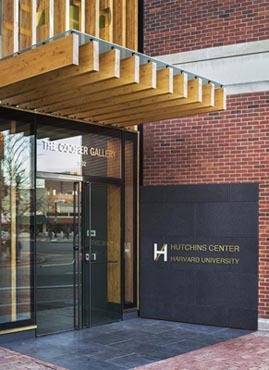 Photo by Dean Kaufman.
Photo by Dean Kaufman.